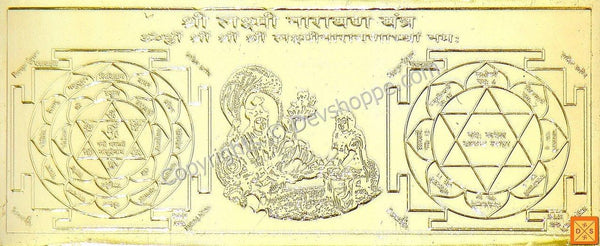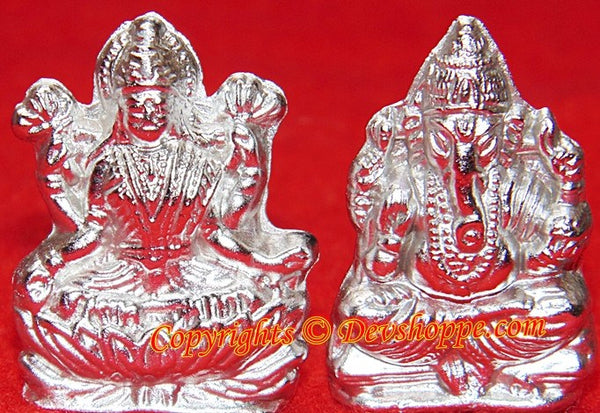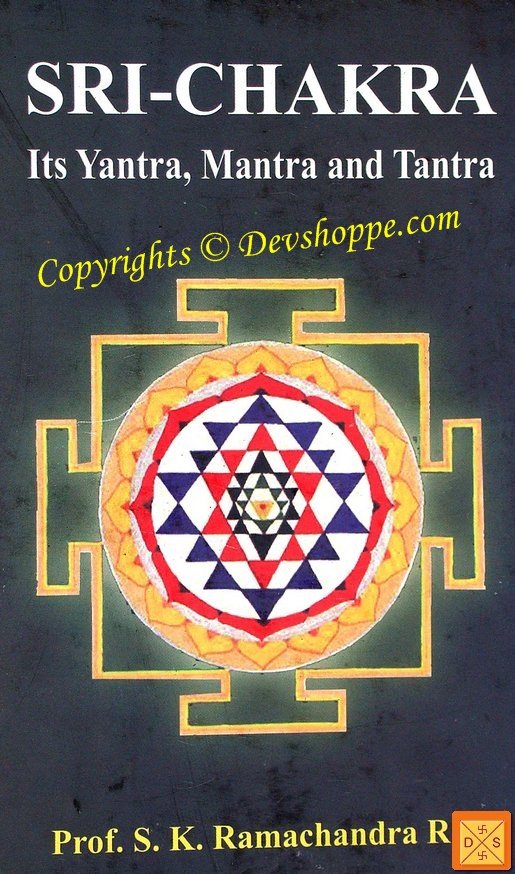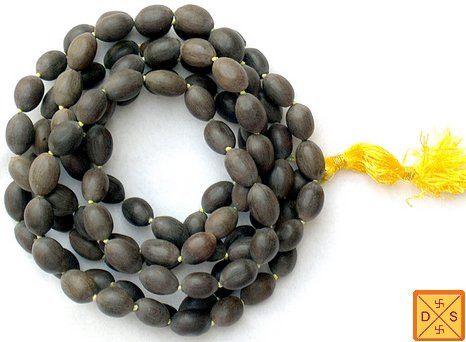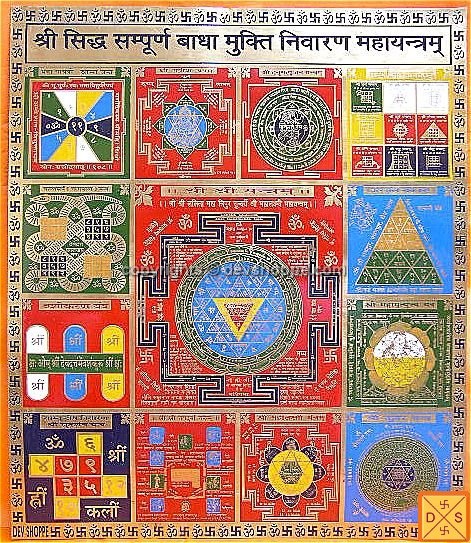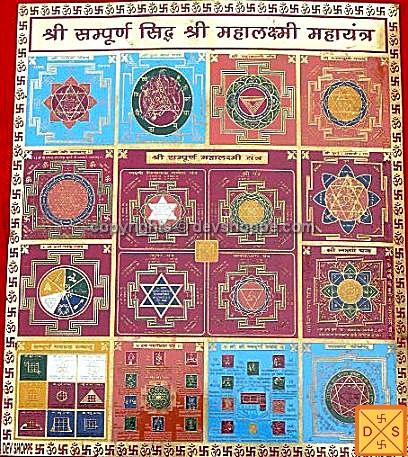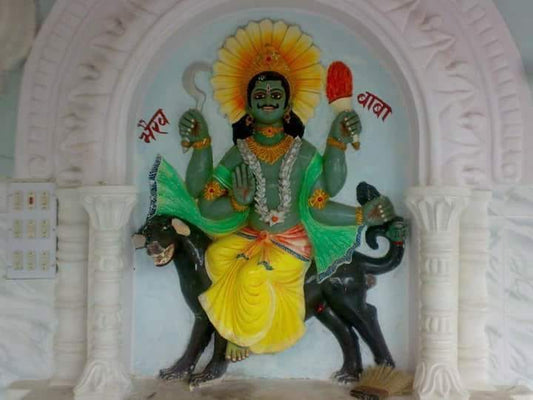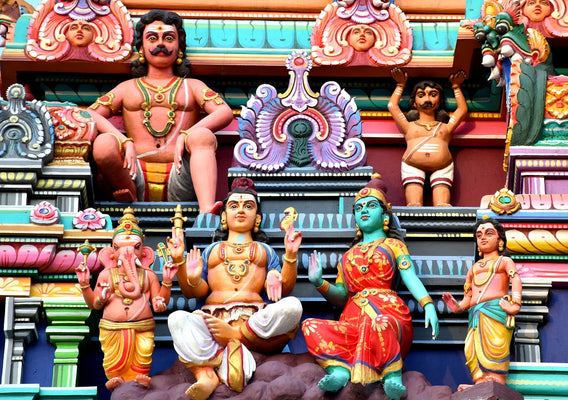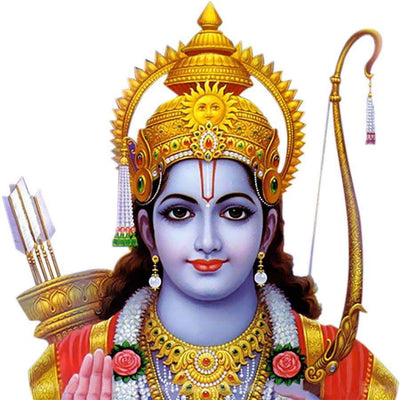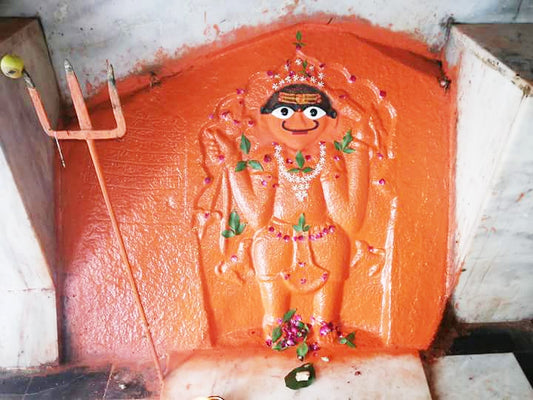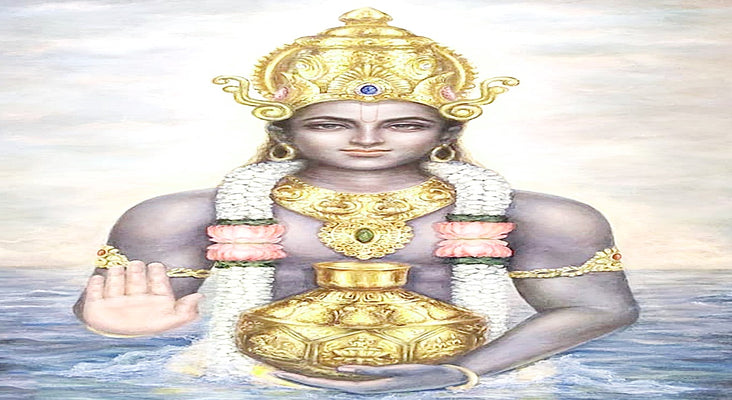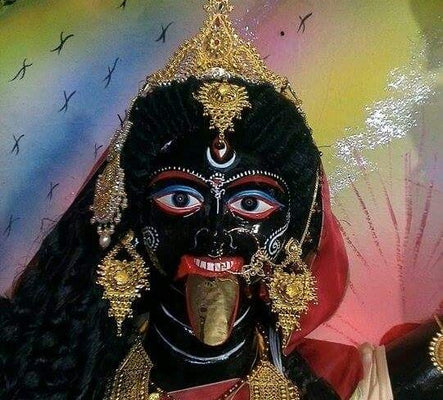Sri Ram Navami festival - Information, Rituals and Celebration
Sri Ram navami celebrates the birth of Sri Ram or Sri Ramachandra. On the ninth day of the first fortnight of Chaitra the birth of Rama is commemorated. The story of Rama was first written by Maharishi Vaalmeeki in about the 4th century B.C. Rama is supposed to have lived during the 8th or 7th century B.C. The epic known as the Ramayana. In some parts of India, it is a nine-day festival, coinciding with the Vasanta Navaratri.
The public worship starts with morning ablutions, chanting Vedic mantras dedicated to Vishnu, and offering flowers and fruit to the god. People keep a fast throughout the day, breaking it only at midnight with fruit. In some parts of India, especially Bihar and Uttar Pradesh, public gatherings called satsangs are organised to commemorate the birth of Rama. Excerpts from the Ramacharitamanas, extolling the glory of Rama, are recited. People of all castes and creeds participate in these gatherings to listen to the stories and their explanations offered by the learned.

History of Ram Navami
Sri Ram navami is celebrated to commemorate the birth of Lord Rama, who killed the demon king Ravana. Along with the Vaisnavas, who celebrate it with due solemnity, Ram navami is celebrated all over the the country on India. Fasting is the norm of the day, and the general belief is that it is a sin not to fast this day. It is also believed that Lord Rama fulfills wishes of all those who fasts and pray to Him on this day. The fast is broken on midnight, generally with fruits and fruit extracts. Since Lord Rama is an incarnation of God Vishnu, one of the triplets of hindu mythology, the worship typically comprises vedic mantras dedicated to Lord Vishnu,and offerings in form of fruits and flowers to Him. The Hindi speaking belt of country organises satsangs - public gatherings to commemorate the festival.
Excerpts from Ramcharitamanas, a book on glory, achievements and powers of Rama, are recited. People of all castes and creed gather together to listen to these scriptures, which may continue well past midnight. Ram navami encourages equility and universal brotherhood. Ayodhya, the birth place of Lord Rama, is the focus of attention in this festival. A grand fair continues for two days, and Rathyatras, carrying manifestations of Ram, his brother Laxman, His wife Sita, and His greatest devotee Mahabali Hanuman, is taken out from almost all Ram temples. Sri Hanuman is known for is undivided attention to Rama, and tales of his devotion form an important part of the celebration. The date of Rama navami dates back to the pre-christian era, (as Hinduism is the oldest religion of the world), and mention of Rama navami is found in the Kalika puran. One the five major vratas of Hindu religion, the fast of Ram navami is taken to be the sole vrata to attain salvation.
Celebrations
Some people choose to fast on this day. The diet of such a person would include potatoes made in any form without haldi (turmeric), garlic, ginger or onion. He can also eat fruit and root vegetables of any kind. Curd, tea, coffee, milk, and water are also permitted. Bhajans praising the exploits of Lord Rama, his loyal brother Lakshman and his devoted wife Sita are sung. The house is swept clean and pictures of Lord Rama, Lakshman, Sita and Hanuman are put on a dais in preparation for the puja. Flowers and incense are kept before the deities. There are two thaalis kept ready in the puja area. One contains the prasad and the other the items necessary for the puja like roli, aipun, rice, water, flowers, a bell and a conch.
First, the youngest female member of the family applies teeka to all the male members of the family. A red bindi is applied on the foreheads of all the female members. Everyone participates in the puja by first sprinkling the water, roli, and aipun on the gods and then showering handfuls of rice on the deities. Then everybody stands up to perform the arti at the end of which ganga jal or plain water is sprinkled over the gathering. The singing of bhajans goes on for the entire puja. Finally, the prasad is distributed among all the people who have gathered for worship.


